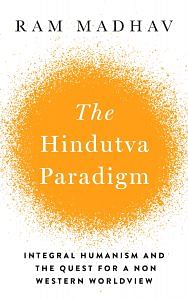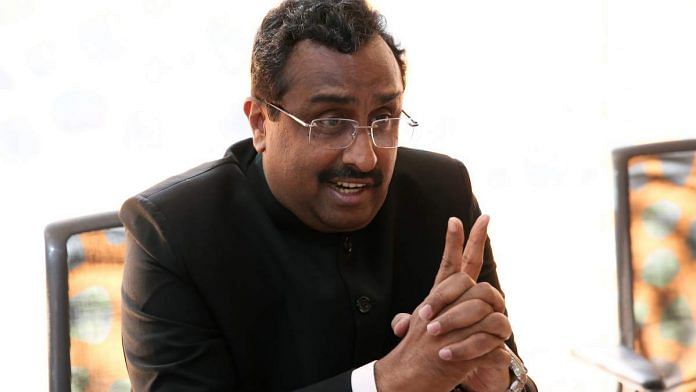The present-day caste system in India is a rigid birth-centric arrangement in line with Plato’s classes. However, the Varnas were not hereditary. Untouchability and birth-based discrimination were unknown to the ancients during the Varnashrama days. No one was high and no one low, to quote the Rig Veda.
Shankara Digvijaya by Madhavacharya proclaimed:
Janmanaa Jaayate Shudrah Sanskaraat Dwija Ucchate Vedapaathi Bhavet Viprah Brahma janaati Brahmanah
‘By birth all are Shudras. By actions men become Dwija— twice born. By reading the Vedas, one becomes Vipra and becomes Brahman by gaining the knowledge of God.’ For Adi Shankara, not birth, but knowledge became the basis for social arrangement.
From Vyasa, Valmiki and Vishva Karma to present-day saints, one finds countless eminent rishis who were Shudras by Varna. Even Megasthenes, the great Greek historian, wrote that there were four castes among Hindus and a Hindu of any caste could become a Sophist (Brahmin). Transmigration was not an exception as in Plato’s classes, but a definite possibility in Hindu Varna order.
Caste hierarchy and privileges based on caste had no sanction in Hinduism. They are the result of the distortions that crept into the Hindu body-politic during the medieval period. Hinduism has witnessed a continuous stream of social reformers who strove to uproot this malice like Narayana Guru, Swami Vivekananda, Jyotiba Phule, Mahatma Gandhi and B.R. Ambedkar.
‘Wherever you go, there will be caste. But that does not mean that there should be these privileges. They should be knocked on the head. The duty of the Advaita is to destroy all privilege. The days of exclusive privileges and exclusive claims are gone, gone forever from the soil of Bharat,’ exclaimed Swami Vivekananda.
Also read: Upper caste networks of political parties are resisting caste census. But not for long
Interestingly, the caste system is no longer the exclusive appendage of Hinduism. Almost all religions in India have these castes today, and they are afflicted by the system of caste-based privileges leading to conflicts within. Dalit Christians is a word frequently used to refer to those who converted to Christianity from the so-called low-caste Hindus. These Dalit Christians complain that they suffer several disabilities and severe discrimination within the Christian church establishment in India. There were instances when it led even to violence and separation of parishes on caste lines as in the South Indian city of Pondicherry in March 2008.
Deen Dayal Upadhyay’s views on Varnashrama sounded supportive of the concept. However, he did not agree that the anomalies and evils that have crept into the system had to be eradicated. ‘Many anomalies could have crept into the Varna Vyavastha today. They all must be eradicated. However, as far as its core idea is concerned, it cannot be understood from a Western prism. The West has held unhealthy competition and conflict as the basis of the social structure. Hinduism does not see conflict, discrimination and competition among different organs of the society; instead, it sees complementarity. Those who find discrimination in Varna Vyavastha fail to see the truth. Varna is not a discriminatory institution, but an organised structure. It is a grave mistake to look for high and low or superior and inferior in it,’ he had said.
The fact remains that the Varna Vyavastha of ancient times, in which transmigration among castes was also a possibility, no longer exists. Its place has been taken over by a system that is based on birth. ‘Janmanaa Jaatihi’—caste by birth—is the present order. In Bhagavad Gita, Krishna had said:
catur-varnyam maya srstam guna-karma-vibhagasah
‘According to the three modes of material nature and the work ascribed to them, the four Varnas of human society were created by Me.’
But the present-day caste is based neither on Guna (material nature) nor on Karma (work). A so-called cobbler by caste can be a professor in a university today, and a so-called Brahmin could be running a shoe store. Yet, caste identity remains the same, as it is acquired by birth. The sad reality about present-day India is that the Varnashrama system has ceased to exist, and the caste system has outlived its utility.
Also read: The Gita is universal and still endorses caste inequality. But story of Ekalavya stands out
Any society that lives on for millennia will acquire certain malevolent characteristics. One such evil characteristic that has crept into the body politic of the Indic society is the sin of untouchability. Its origins are yet suspect. It does not have any kind of scriptural sanction. Countless social reformers have fought against this social evil. ‘Who reduced the Bhângis and the Pariahs to their present degraded condition? Heartlessness in our behaviour and at the same time preaching wonderful Advaitism—is it not adding insult to injury?’ thundered Swami Vivekananda angrily. Ambedkar’s fight for dignity of life for the so-called untouchables is well-known. Gandhi spent his whole life educating people against this evil practice. He not just preached but showed the way by living it.
A particularly important reform in this regard came about when prominent saints and sages of India joined together under the auspices of the Vishwa Hindu Parishad at Udipi in Karnataka in 1969 and unequivocally declared that no one was inferior or superior by virtue of his birth in a particular caste. It was a turning point in the history of contemporary Hinduism when a large number of prominent religious and spiritual leaders of India came together to decry untouchability and caste discrimination by declaring—‘Hindavah Sodarah sarve’, meaning all Hindus are siblings; and ‘Na Hinduh Patito Bhavet’, that is, no Hindu shall be considered inferior’.
Balasaheb Deoras, the third Sarsanghachalak of the RSS, delivered a series of lectures called the Vasant Vyakhyan Mala at Pune in Maharashtra in 1973. In a significant statement about the caste system, he said: ‘Whatever be the origin, all of us consider untouchability as a terrible folly. It must be thrown out lock, stock and barrel,’ he insisted. His statement, ‘If untouchability is not a crime, nothing in this world is a crime,’ continues to inspire millions of social activists in India in their work for social harmony It also brings us to the bigger question of how to deal with the caste system. It has its protagonists who continue to argue that the caste system is a wholesome organisation of society. Swami Vivekananda had a pragmatic suggestion: ‘The only way to bring about the levelling of castes is to appropriate the culture, the education which is the strength of the higher castes.’ But that was more than a century ago. Experience shows otherwise. In any case, as Deen Dayal himself argued, if it is a system, it should be liable to change. Popular British poet Lord Alfred Tennyson had said, ‘The old order changeth yielding place to new, and God fulfils in many ways, lest one good custom should corrupt the world.’ Varnashrama might have been good in a particular period. But it has outlived its utility. And the caste system has today become the single-most lethal challenge to social harmony and cohesion.
There were efforts to break the caste system as late as in the twentieth century. Ambedkar wrote about annihilation of caste. Socialists have experimented with groups of caste-less citizens. They even started bodies like Jaati Paati Todak Mandal—Society of Breakers of Caste Barriers. But tragically, in a few years’ time, the Jaati Paati Todak Mandal became a caste.
Caste is a system of social organisation. Society cannot live in a disorganised manner. There cannot be systemic vacuum either. Hence the need of the hour is to ‘replace’ the caste with something else, rather than trying to ‘remove’ it. Golwalkar had suggested that trade and professional ‘guilds’ could replace castes. In a way, that is happening in Indian society, slowly but gradually.
 This excerpt from Ram Madhav’s ‘The Hindutva Paradigm: Integral Humanism and the Quest for a Non-Western Worldview’ has been published with permission from Westland Publications.
This excerpt from Ram Madhav’s ‘The Hindutva Paradigm: Integral Humanism and the Quest for a Non-Western Worldview’ has been published with permission from Westland Publications.



